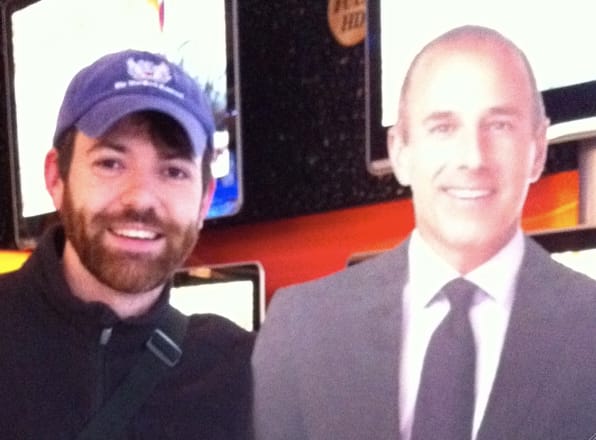St. Elsewhere: Birth of the Medical Drama
 Steve Marsi
at
.
Steve Marsi
at
.
A hospital is a perfect setting for a TV show.
Smart people work long hours under heavy pressure, patients provide a never-ending supply of life-or-death situations, and the overnight on-call rooms turn the place into a hotel of sorts, an ideal microcosm for a roiling cauldron of serialized melodrama.
Is it any wonder the doctor show is one of the most enduring genres on American television, asks the New London Day?
Grey's Anatomy, one of TV's top-rated programs, combines the format and pacing of ER with the stylized urban romance and hyper-analytical narration of Sex and the City. But doctor shows didn't always look and sound so bold. Something happened between Marcus Welby, M.D., whose title character was a model of paternal perfection, and Dr. Miranda Bailey of Grey's Anatomy, whom colleagues call The Nazi.
What happened was St. Elsewhere, an NBC hospital drama that debuted in 1982 and radically redefined the TV doctor. Its first season was released recently on DVD.
St. Elsewhere did to medical dramas what Hill Street Blues did to police shows: It crowded the screen with a large ensemble cast, padded the script with a bewildering number of ongoing stories and introduced human flaws to a breed of professionals that television previously had presented as super-human.
The personal lives of the doctors were as important as the jobs they were doing. They were flawed, they made mistakes and their patients didn't always get better.
The title character in House (Hugh Laurie, who beat out Patrick Dempsey for the role) owes his existence to St. Elsewhere's acerbic but brilliant Mark Craig (William Daniels). Others on the staff of St. Eligius Hospital â€" from the righteously serious Dr. Phillip Chandler (Denzel Washington) to the comic Dr. Wayne Fiscus (Howie Mandel, with a full head of hair) â€" continue to be echoed in characters on current hospital shows.
St. Elsewhere was a literary achievement, filled with sophisticated dialogue, complex stories and an attention to narrative detail never before seen in a TV series. Although critics loved the show, it never achieved real ratings success over its six-year run.But ER, which premiered in 1994, juiced up the formula, quickly achieving the star status that eluded its predecessor. While St. Elsewhere at its best had become postmodernist theater of the absurd, ER was about doctors.
Joe Sachs, an executive producer and writer on ER who's a former emergency room doctor himself, said the show delivers the illusion that viewers are seeing the inner workings of an urban emergency room.
"There are physicians on the writing staff," he said, "and not just as consultants. They are there every day."
More importantly, perhaps, is the fact that ER moves faster than a speeding bullet. This is made possible, Sachs said, by sets, cameras and digital editing systems that accommodate intensely frenetic shots and editing.
Grey's Anatomy follows in the footsteps of St. Elsewhere and ER, though creator Shonda Rhimes has never seen St. Elsewhere, said co-executive producer Betsy Beers.
In Grey's Anatomy, there's a core of young interns under the guidance of more experienced medical tyrants; within these characters, ego and libido battle with Hippocratic commitments in highly satisfying ways.
One thing that differentiates Grey's Anatomy from its predecessors, Beers said, is that it's about surgical interns.
"In the emergency room there is no down time," Beers said. "Surgery has downtime, space for breathing."
Heavy breathing, sometimes.
Now in its third season and thriving on Thursday, TV's most competitive night, simmering stories have begun to boil. The show has become the thinking person's soap opera, The O.C. for big kids.
It's hard to imagine the doctor shows of yesterday attempting to pull off what Grey's Anatomy can. The first medical TV shows appeared in the early 1950s, but it was in the 1960s that the form was really established.
This was the decade that introduced a bright and shining trio of the most perfect, caring, compassionate healers you could ever hope to meet, even in a time before the HMO.
Dr. Kildare, starring Richard Chamberlain, debuted on NBC in 1961. Four days later, Vince Edwards brought Ben Casey to ABC. Marcus Welby, M.D., also on ABC, rounded out the team in 1969, with Robert Young bringing to the title role the same gentle authority he wielded on Father Knows Best.
This was an era of the doctor as demigod. Dedicated visionaries with impeccable bedside manners, these three gave intimate personal attention to their patients and were willing to make house calls.
In the 1970s, shows such as M.A.S.H. brought a more modern sensibility to the genre, and by the 1980s, the doctor-as-hero was on the verge of extinction.
Emmy laureate Mark Tinker, who has directed episodes of "St. Elsewhere, ER, Chicago Hope, and Grey's Anatomy, classified Kildare and its earlier counterparts as "Mom and Dad's doctor show."
"St. Elsewhere broke that mold, featuring a hospital that was no place you wanted to go when you were sick," Tinker said.
"ER was St. Elsewhere on methamphetamines, then Grey's Anatomy combined them both and added the romanticized style of Sex and the City and the music video."
Steve Marsi is the Managing Editor of TV Fanatic. Follow him on Google+ or email him here.















